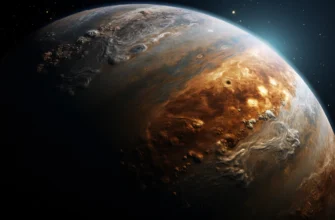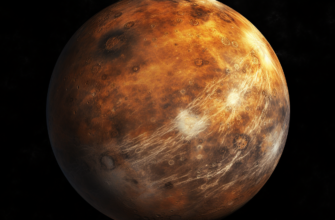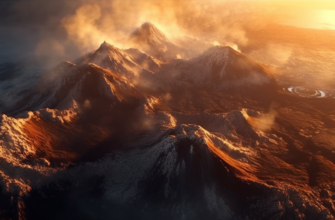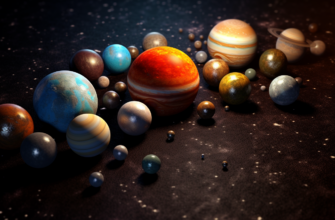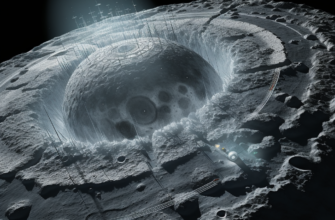- The Farthest Planet in Our Solar System
- Overview
- Discovery and Naming of Neptune
- Physical Characteristics of Neptune
- Size and Mass
- Composition and Structure
- The Atmosphere of Neptune
- Weather and Storms on Neptune
- The Rings of Neptune
- The Moons of Neptune
- The Voyager 2 Encounter: A Fleeting Glimpse into the Neptunian Realm
- Ongoing Exploration and Future Missions to Neptune
- The Significance of Neptune
- Conclusion
The Farthest Planet in Our Solar System
“The mystic blue planet, shrouded in its veil of azure haze, beckons us to explore the unknown realms that lie beyond our world.” – Carl Sagan
From its discovery in 1846 to the historic Voyager 2 flyby in 1989, Neptune has captivated the human imagination with its enigmatic beauty and the promise of unraveling cosmic mysteries. As the farthest planet from the Sun in our solar system, this icy giant holds the key to understanding the formation and evolution of our celestial neighborhood.
In this comprehensive article, we will embark on a journey to explore the fascinating world of Neptune, delving into its history, physical characteristics, and the ongoing scientific endeavors to unravel its secrets.
Overview

Neptune, the eighth and outermost planet in our solar system, is a true celestial wonder. With its distinctive blue hue and swirling clouds, it captivates astronomers and space enthusiasts alike. Discovered in 1846, Neptune has remained an enigma, its secrets hidden behind a veil of atmospheric turbulence and extreme distances from Earth.
At an average distance of 4.5 billion kilometers (2.8 billion miles) from the Sun, Neptune orbits the star once every 164.8 Earth years. Its elliptical path takes it as close as 4.5 billion kilometers and as far as 4.6 billion kilometers from the Sun, making it the farthest known planet in our solar system.
Despite its vast distance from Earth, Neptune’s presence has been felt throughout human history. Its gravitational influence has subtly shaped the orbits of other celestial bodies, leading to its eventual discovery through mathematical predictions and careful observations.
Discovery and Naming of Neptune

The story of Neptune’s discovery is a testament to the perseverance and ingenuity of human scientific endeavors. In the early 19th century, astronomers noticed peculiar irregularities in the orbit of Uranus, the seventh planet from the Sun. These discrepancies could not be explained by the known laws of gravity and the planets’ masses at the time.
Two brilliant minds, the English mathematician and astronomer John Couch Adams and the French mathematician and astronomer Urbain Le Verrier, independently calculated the position of an unknown planet that could account for the observed perturbations in Uranus’s orbit. Their groundbreaking work paved the way for the discovery of Neptune.
On September 23, 1846, Johann Gottfried Galle and Heinrich Louis d’Arrest, astronomers at the Berlin Observatory, observed a faint, blue-green object in the predicted location, confirming the existence of the eighth planet in our solar system.
The naming of Neptune followed a long tradition of associating planets with Roman deities. Initially referred to as “the planet exterior to Uranus” or “Le Verrier’s planet,” the new celestial body was eventually named “Neptune” after the Roman god of the sea, proposed by Le Verrier himself.
Physical Characteristics of Neptune
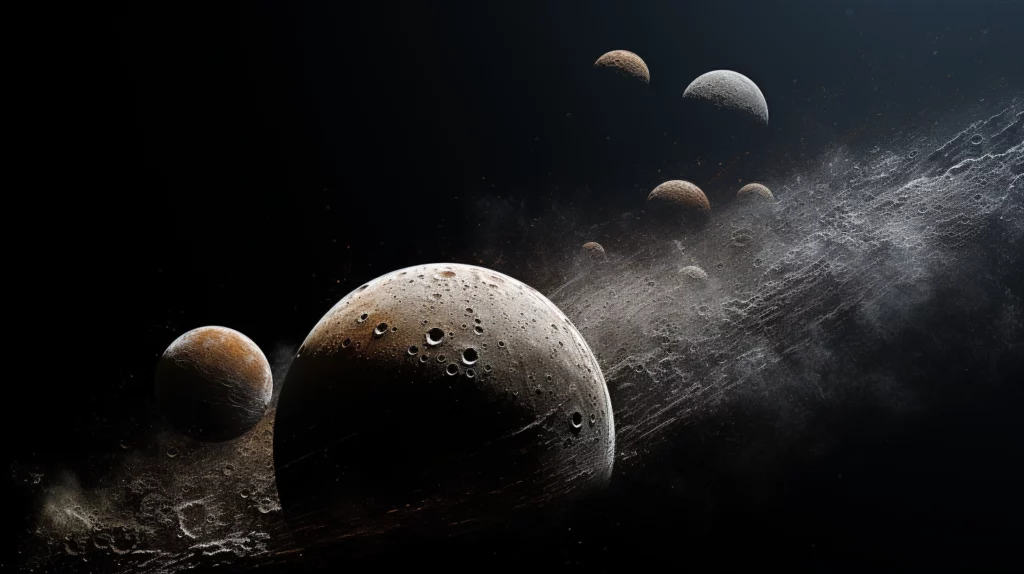
Size and Mass
With a mean radius of 24,622 kilometers (15,299 miles), Neptune is the fourth-largest planet in our solar system, surpassed only by Jupiter, Saturn, and Uranus. Its mass, estimated at 1.0243 × 10^26 kilograms (approximately 17 times the mass of Earth), makes it the third most massive planet, following Jupiter and Saturn.
Despite its size and mass, Neptune’s density of 1.638 grams per cubic centimeter (g/cm³) is remarkably low, indicating that it is primarily composed of lighter elements like hydrogen, helium, and ice. This low density has led scientists to classify Neptune as an “ice giant,” along with its neighbor Uranus.
Composition and Structure
Neptune’s composition and internal structure are subjects of ongoing scientific investigation. While its exact composition remains uncertain, it is believed to consist primarily of a rocky core surrounded by a thick layer of ice, water, ammonia, and methane.
The planet’s core is thought to be composed of iron, nickel, and silicates, with a temperature estimated to reach up to 7,000 degrees Celsius (12,632 degrees Fahrenheit). This extreme temperature is a result of the immense gravitational pressure exerted by the planet’s mass.
Surrounding the core is a vast ocean of water, ammonia, and methane, which extends outward for thousands of kilometers. This liquid layer is believed to be in a state of constant motion, driven by the planet’s internal heat and rapid rotation.
The outermost layer of Neptune is its atmosphere, a turbulent and dynamic region that exhibits some of the most striking features of the planet.
The Atmosphere of Neptune
Neptune’s atmosphere is one of the most visually stunning and scientifically intriguing aspects of the planet. Its distinctive blue color is the result of methane gas absorbing red light, creating a vivid azure hue that is visible from Earth.
The atmosphere primarily consists of hydrogen, helium, and methane, with trace amounts of other gases like hydrogen sulfide and ammonia. The top layer of the atmosphere is composed of hydrogen and helium, while the lower layers contain increasing amounts of methane and other icy compounds.
One of the most remarkable features of Neptune’s atmosphere is the presence of powerful winds and storms. These atmospheric disturbances can reach speeds of up to 2,100 kilometers per hour (1,305 miles per hour), making them the fastest winds in the solar system.
Weather and Storms on Neptune
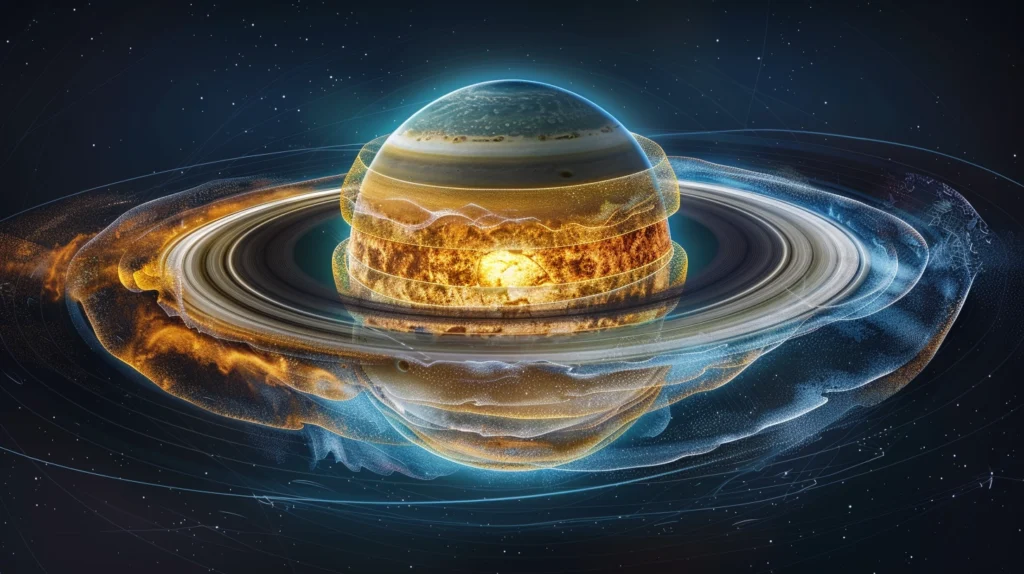
Neptune’s weather patterns are characterized by persistent storms and turbulent atmospheric activity. The most famous of these storms is the Great Dark Spot, a massive anticyclonic storm system that was first observed by the Voyager 2 spacecraft in 1989.
The Great Dark Spot, which has since disappeared, was comparable in size to the Great Red Spot on Jupiter. It was a high-pressure system that lasted for several years before gradually dissipating, only to be replaced by other transient storms.
In addition to the Great Dark Spot, Neptune’s atmosphere is home to numerous smaller storms, wind systems, and cloud formations. These atmospheric phenomena are thought to be driven by the planet’s rapid rotation and internal heat sources, creating a dynamic and ever-changing weather pattern.
The Rings of Neptune
Like many other planets in our solar system, Neptune is surrounded by a system of rings. However, unlike the bright and prominent rings of Saturn, Neptune’s rings are much fainter and more diffuse.
The ring system was first discovered in 1984 by astronomers using the Voyager 2 spacecraft. It consists of several distinct rings, each named after astronomers or astronomers’ spouses who contributed to the study of Neptune.
The most prominent of these rings is the Adams Ring, named after the English mathematician and astronomer John Couch Adams, who predicted the existence of Neptune. This ring is composed of dense, rocky material and is the brightest and most easily observed of Neptune’s rings.
Other notable rings include the Le Verrier Ring, named after the French mathematician and astronomer Urbain Le Verrier, and the Galle Ring, named after the German astronomer Johann Gottfried Galle, who first observed Neptune.
While Neptune’s rings are relatively faint and narrow compared to those of other planets, their existence provides valuable insights into the formation and evolution of planetary ring systems in our solar system.
The Moons of Neptune
Neptune is accompanied by a retinue of 14 known moons, each with its unique characteristics and scientific significance. The largest of these moons is Triton, a celestial body that has captured the attention of astronomers and planetary scientists alike.
Triton, with a diameter of 2,707 kilometers (1,682 miles), is the seventh-largest moon in our solar system and the largest of Neptune’s moons. It is the only known moon in the solar system to have a retrograde orbit, meaning it orbits in the opposite direction of Neptune’s rotation.
This peculiar orbit, combined with Triton’s composition of water ice, rock, and frozen nitrogen, has led scientists to theorize that it may have been a Kuiper Belt object captured by Neptune’s gravitational pull in the distant past.
Other notable moons of Neptune include Nereid, which has an eccentric and highly elliptical orbit, and Proteus, the second-largest moon and a potential source of material for Neptune’s ring system.
Each of Neptune’s moons offers unique insights into the formation and evolution of our solar system, and their study continues to shed light on the complex interplay of gravitational forces and celestial dynamics.
The Voyager 2 Encounter: A Fleeting Glimpse into the Neptunian Realm

While ground-based observations and telescopic studies have provided valuable information about Neptune, our understanding of this distant world took a significant leap forward with the historic Voyager 2 flyby in 1989.
Launched in 1977, the Voyager 2 spacecraft embarked on an ambitious journey to explore the outer planets of our solar system, including Jupiter, Saturn, Uranus, and ultimately, Neptune. On August 25, 1989, after a journey of nearly 12 years and 4.8 billion kilometers (3 billion miles), Voyager 2 made its closest approach to Neptune at a distance of approximately 48,000 kilometers (30,000 miles).
During this fleeting encounter, which lasted only a few hours, the spacecraft’s instruments and cameras captured unprecedented data and images of Neptune and its moons, providing scientists with a wealth of information that revolutionized our understanding of this distant world.
Some of the key discoveries and observations made by Voyager 2 include:
- The detection of Neptune’s Great Dark Spot and other atmospheric storms and cloud formations, providing insight into the planet’s dynamic weather patterns.
- The discovery of Neptune’s ring system, composed of faint and diffuse rings made up of rocky material.
- Detailed observations and measurements of Triton, Neptune’s largest moon, revealing its retrograde orbit and unique surface features.
- The detection of auroras and magnetic fields around Neptune, indicating the presence of an active planetary magnetosphere.
- The identification of numerous smaller moons and their orbits, expanding our knowledge of Neptune’s satellite system.
While the Voyager 2 encounter was brief, the data and images it provided have been instrumental in shaping our understanding of Neptune and its place in our solar system. The information gathered during this historic flyby continues to fuel scientific research and speculation about this enigmatic blue planet.
Ongoing Exploration and Future Missions to Neptune

Despite the groundbreaking discoveries made by Voyager 2, many questions about Neptune remain unanswered, and scientists continue to explore new ways to study this distant world. Ongoing observations from Earth-based telescopes and space-based observatories have provided valuable insights, but a dedicated mission to Neptune is considered the next major step in unraveling its mysteries.
Several potential future missions to Neptune have been proposed, each with its own scientific goals and technological challenges. One such concept is the Trident mission, proposed by NASA and designed to study Neptune and its moons in unprecedented detail.
The Trident mission would involve a flyby spacecraft and an atmospheric probe, allowing for comprehensive observations of Neptune’s atmosphere, magnetosphere, and interior structure. Additionally, the mission would include landers or penetrators to explore the surfaces of Triton and other moons, providing insights into their composition and potential for hosting subsurface oceans or even life.
Another proposed mission is the Neptune Odyssey, a joint endeavor between NASA and the European Space Agency (ESA). This ambitious mission would involve a spacecraft orbiting Neptune and deploying multiple probes and landers to study the planet, its moons, and its magnetosphere in unprecedented detail.
While these missions are still in the conceptual stage and face significant technological and financial challenges, they represent the ongoing pursuit of knowledge and the human desire to explore the unknown.
As technology advances and our understanding of Neptune deepens, future missions may unlock new avenues for exploration, potentially leading to groundbreaking discoveries about this enigmatic blue planet and its place in the cosmic tapestry.
The Significance of Neptune

Neptune’s significance in our understanding of the solar system and the broader universe extends far beyond its physical characteristics and atmospheric phenomena. This distant world holds the key to unlocking mysteries about the formation and evolution of our celestial neighborhood, as well as the potential for extraterrestrial life.
One of the most intriguing aspects of Neptune is its potential to harbor subsurface oceans beneath the icy crusts of its moons, particularly Triton. These potential oceans, if they exist, could provide the necessary conditions for the emergence of life, much like the proposed subsurface oceans on Europa, a moon of Jupiter.
The study of Neptune’s moons and their composition could offer valuable insights into the formation of icy bodies in the outer reaches of our solar system, shedding light on the processes that shape these celestial objects and their potential for hosting life.
Furthermore, the study of Neptune’s atmosphere and weather patterns could provide a better understanding of the complex dynamics that govern atmospheric processes on other planets, including those outside our solar system. The extreme winds and storms observed on Neptune serve as a natural laboratory for studying the interplay between planetary rotation, internal heat sources, and atmospheric composition.
Beyond its scientific significance, Neptune also holds cultural and philosophical relevance. As the outermost planet in our solar system, it represents the frontier of human exploration and the boundless curiosity that drives us to push the boundaries of knowledge.
The discovery of Neptune itself was a triumph of human ingenuity and perseverance, demonstrating our ability to predict and observe phenomena beyond the limits of our direct perception.
As we continue to study Neptune and unravel its mysteries, we may find ourselves confronted with new questions and challenges that push the boundaries of our understanding further. The pursuit of knowledge about this distant world is not only a scientific endeavor but also a testament to the human spirit and our relentless quest to explore the cosmos.
Conclusion
Neptune, the enigmatic blue planet, stands as a sentinel at the edge of our solar system, beckoning us to explore the unknown realms that lie beyond our world. With its swirling clouds, powerful storms, and captivating moons, this icy giant holds the key to unlocking the mysteries of our celestial neighborhood.
Through the historic Voyager 2 encounter and ongoing observations from Earth and space-based telescopes, our understanding of Neptune has deepened, but many questions remain unanswered. Future missions and technological advancements hold the promise of revealing even more about this distant world, shedding light on its composition, atmospheric dynamics, and the potential for harboring life.
Neptune’s significance transcends mere scientific curiosity. It represents the human spirit of exploration, our relentless pursuit of knowledge, and our desire to push the boundaries of our understanding. As we continue to study this enigmatic blue planet, we may find ourselves confronted with new questions and challenges that push the limits of our imagination and inspire us to venture further into the cosmic unknown.
So let us embrace the mysteries of Neptune, for in unraveling its secrets, we may unlock the doors to a deeper understanding of our place in the universe and our role as explorers and custodians of this vast and wondrous cosmos.




